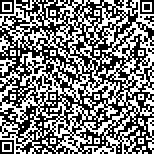李贞晶,孟宪忠,瞿昱,等.双侧手功能训练对卒中患者手功能及手屈伸肌群表面肌电的影响[J].中华物理医学与康复杂志,2019,41(8):584-587
扫码阅读全文

|
| 双侧手功能训练对卒中患者手功能及手屈伸肌群表面肌电的影响 |
|
| |
| DOI:DOI:10.3760/cma.j.issn.0254-1424.2019.08.006 |
| 中文关键词: 手功能 脑卒中 表面肌电 |
| 英文关键词: Hand function Stroke Surface electromyography |
| 基金项目:上海市浦东新区人民医院重点学科建设项目(PDRYZDXK2016-03) |
|
| 摘要点击次数: 5314 |
| 全文下载次数: 5956 |
| 中文摘要: |
| 目的 探讨双侧手功能训练对脑卒中偏瘫患者手运动功能的影响。 方法 纳入脑卒中后单侧手功能障碍患者31例,按随机数字表法分为训练组(16例)和对照组(15例),2组均给予患侧常规手功能训练,每次60 min,每日1次,每周5 d,连续4周,训练组在此基础上增加双侧手功能训练,每次40 min,每日1次,每周5 d,连续4周。分别于治疗前和治疗4周后(治疗后),测量患者双侧手屈曲动作下及背伸动作下的屈指浅肌、伸指肌表面肌电信号,分析积分肌电值(iEMG),并采用Fugl-Meyer量表上肢部分(FMA-UE)评价患侧手运动功能。 结果 ①治疗前后组内比较,训练组治疗后患侧手屈曲动作下的屈指浅肌、伸指肌iEMG值分别为(52.88±7.76)和(56.69±8.66)μV,患侧手背伸动作下的屈指浅肌、伸指肌iEMG值分别为(29.19±4.34)和(40.44±5.27)μV,较治疗前[(38.37±5.84)和(27.88±4.84)μV;(20.31±3.66)和(17.75±5.74)μV]均有明显改善(P<0.01);对照组治疗后患侧手屈曲动作下的屈指浅肌、伸指肌iEMG值分别为(44.60±8.19)μV和(39.20±8.55)μV,患侧手背伸动作下的屈指浅肌、伸指肌iEMG值分别为(25.27±4.40)μV和(25.73±6.45)μV;与治疗前比较,患侧手屈曲动作下伸指肌的iEMG值有显著改善(P<0.01),患侧手屈曲动作下的屈指浅肌及患侧手背伸动作下的屈指浅肌、伸指肌iEMG值亦有明显改善(P<0.05)。②组间比较,治疗前2组间上述数据差异均无统计学意义(P>0.05);治疗后,手屈曲动作下的患侧手屈指浅肌和伸指肌iEMG值组间差异有统计学意义(P<0.01),手背伸动作下的患侧手屈指浅肌iEMG值组间差异有统计学意义(P<0.05),伸指肌iEMG值组间差异亦有统计学意义(P<0.01)。③治疗后训练组和对照组的FMA-UE总评分[(25.12±6.84)和(20.47±5.93)分]均较组内治疗前[(17.94±7.35)和(15.67±5.92)分]有显著提高(P<0.01);训练组治疗后的FMA-UE评分优于对照组,2组间比较且差异亦有统计学意义(P<0.05)。 结论 双侧手功能训练可以明显改善脑卒中偏瘫患者的手运动功能。 |
| 英文摘要: |
| Objective To explore the effect of bilateral hand function training on the hand function of stroke survivors. Methods Thirty-one patients with unilateral hand dysfunction after stroke were randomly divided into an experimental group of 16 and a control group of 15. Both groups were given 60 minutes of hand function training of their affected hands daily, five days a week for 4 weeks. The experimental group was additionally provided with 40 minutes of bilateral hand training on the basis of the aforementioned intervention. Before the treatment and after the 4 weeks, integrated surface electromyography (iEMG) signals were recorded from both hands′ flexor and extensor muscles. Both groups were also assessed using the Fugl-Meyer motor assessment for the upper extremities (FMA-UE). Results After the treatment, the average iEMG of the flexor and extensor muscles during flexion and extension were significantly better than before the treatment in both groups. There was no significant difference between the two groups in their average iEMGs before the treatment, but afterward significant differences were observed in all the iEMG measurements. After the treatment the average total FMA-UE score of the experimental group was significantly higher than that of the control group. Conclusion Bilateral hand function training is significantly more effective than unilateral training in promoting the recovery of flexor and extensor muscle function after a stroke. |
|
查看全文
查看/发表评论 下载PDF阅读器 |
| 关闭 |